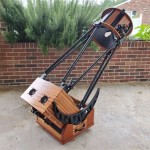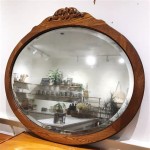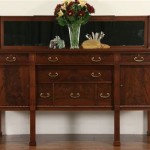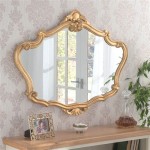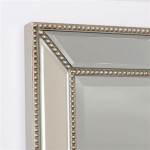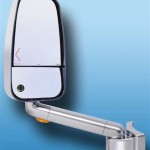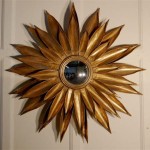How Are Large Bathroom Mirrors Attached to Walls?
Large bathroom mirrors, often a focal point in the space, add a touch of elegance and create the illusion of a more expansive room. The method of attachment is crucial for both aesthetic and safety reasons. Choosing the right technique ensures the mirror remains firmly in place, withstands daily use, and minimizes the risk of accidents. This article will explore the most common methods for attaching large bathroom mirrors to walls, providing insights into their strengths, limitations, and considerations for specific situations.
1. Adhesive Mirror Mounting
Adhesive mirror mounting, also known as "no-drill" installation, is a popular choice for homeowners wanting a quick and easy solution. This method utilizes specialized adhesives designed specifically for mirrors, eliminating the need for drilling holes into the wall. The process usually involves applying adhesive strips or tape directly to the back of the mirror and then pressing it firmly against the wall.
The advantages of adhesive mounting include its non-invasive nature, making it ideal for renters or those hesitant to damage their walls. Additionally, it requires minimal tools and can be completed quickly. However, there are also drawbacks to consider. Adhesive mounting is generally not recommended for heavy mirrors, as the adhesive strength may not be sufficient to provide adequate support. Furthermore, depending on the adhesive used, removal may leave behind residues that can require additional cleaning.
2. D-Ring Hangers and Wire
D-ring hangers, often accompanied by sturdy wire, are a more traditional and robust approach to mirror installation. This method involves attaching D-ring hangers to the back of the mirror using screws or adhesive. The wire is then looped through the D-rings, allowing for hanging the mirror from a securely mounted hook or picture hanging system.
D-ring hangers offer greater stability than adhesive solutions, especially for heavier mirrors. They also provide flexibility for adjusting the mirror's position and making slight adjustments if needed. However, this method requires drilling holes in the wall for the hook or hanging system, making it less suitable for renters or those concerned about wall damage. Additionally, the process of attaching the hangers and wire to the mirror can be more time-consuming than adhesive solutions.
3. Mirror Clips
Mirror clips are specialized fasteners designed for securely attaching large mirrors to walls. These clips feature a strong spring mechanism that holds the mirror tightly against the wall, eliminating the need for drilling holes or using adhesive. Installation typically involves mounting the clips to the wall first and then carefully sliding the mirror into place.
Mirror clips are often considered the most secure and robust method of mirror installation, capable of supporting even very heavy mirrors. They are also relatively easy to install and can be removed without leaving noticeable damage to the wall. However, the clips themselves may be visible, especially if the mirror's edges are not flush against the wall. Additionally, selecting the right clip size and type is essential to ensure proper support and minimize the risk of the mirror falling.
4. Mirror Mounting Plates
Mirror mounting plates are an excellent option for large, heavy mirrors that require maximum support. These plates, typically made from metal or wood, are attached to the back of the mirror and then secured directly to the wall using screws. The plate itself provides a large surface area for distributing weight and reducing the risk of the mirror detaching.
Mirror mounting plates offer superior stability and can accommodate even the heaviest mirrors. They are customizable in terms of size and material, allowing for a tailored solution to meet specific weight requirements. However, like other methods involving screws, mounting plates require drilling holes into the wall, potentially impacting renters or those concerned about wall damage. Installation can also be more complex and time-consuming compared to other methods.
Ultimately, the best method for attaching a large bathroom mirror depends on factors such as the mirror's size and weight, the condition of the wall, and personal preferences. Carefully considering these factors and consulting with a professional if necessary can ensure a durable and safe installation that enhances the look and functionality of your bathroom space.

How To Safely And Easily Remove A Large Bathroom Builder Mirror From The Wall Site Title

How To Safely And Easily Remove A Large Bathroom Builder Mirror From The Wall Site Title

How To Safely And Easily Remove A Large Bathroom Builder Mirror From The Wall Site Title
:strip_icc()/Design_CathieHongInteriorsPhoto_ChristyQPhotography-b2290decbe0e4d0b952f280fb7bdc896.jpg?strip=all)
How To Remove A Bathroom Mirror From The Wall

How To Remove A Bathroom Mirror Lowe S

How To Install A Mirror Without Frame Merrypad

How To Remove A Bathroom Mirror Lowe S

How To Pick And Hang The Perfect Bathroom Mirror Roomhints

How To Safely And Easily Remove A Large Bathroom Builder Mirror From The Wall Site Title

Easy Diy Tutorial Adding Trim Around A Giant Mirror For Ers

